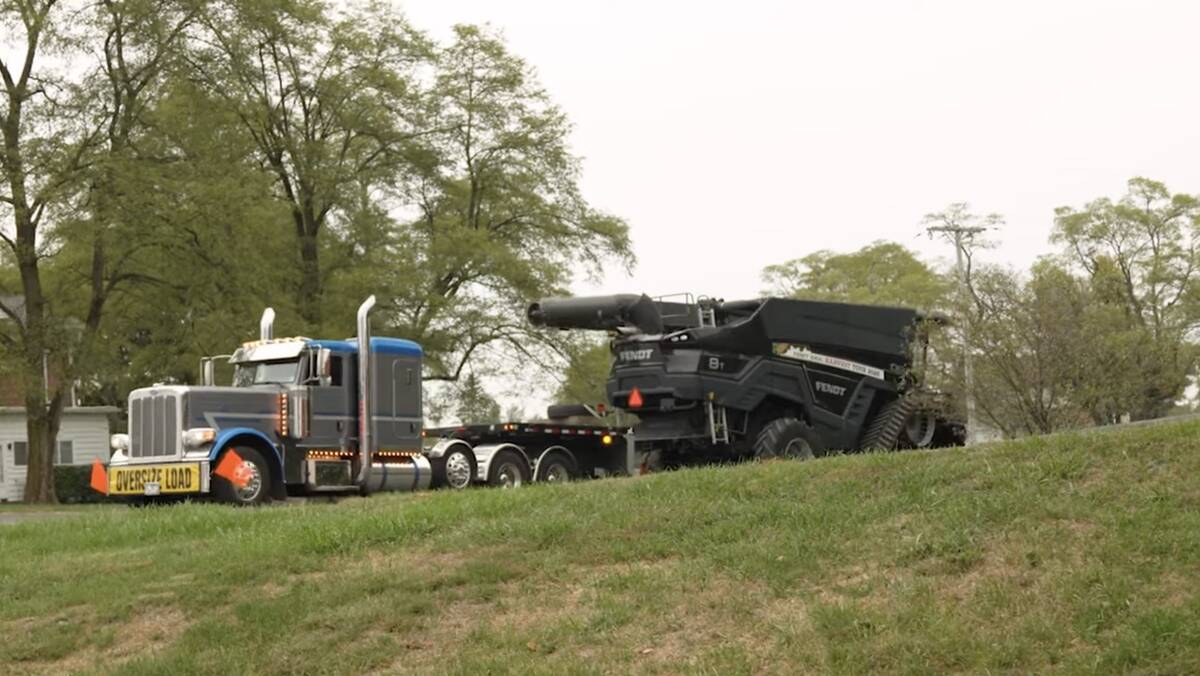Producers on 400 prairie farms might sleep easier next year.
A new insurance program that is based on individual gross production costs and operational margins is designed to encourage risk mitigation through strong agronomic practices and protect against most price-and production-related business perils.
Three partners with backgrounds in agriculture, finance and insurance have formed Global Ag Risk Solutions as a way to insure the best grain producers against factors they can’t control.
Grant Kosior, Dean Klippenstein and Clark Coulson developed the idea of insuring grain production margins, which until now have generally been considered un-insurable in Western Canada.
Read Also

Fendt takes a combine on the road in the U.S.
Putting an Ideal combine in fields across different regions has given the brand a chance to prove that the combine is capable of performing well in a variety of conditions.
The company, based in Moose Jaw, Sask., takes an insurance provider’s approach to evaluating risk by basing it on five to six years of a farm’s past production and financial performance.
The concept is a combination of the AgriStability program, provincial crop insurance, hail coverage and private business plans.
It will evaluate farms based on how well they typically manage their operations and produce a margin above the cost of seed, fertilizer and chemicals.
It is that margin and those costs that the company is willing to underwrite for a fee.
“Insurance is a form of financial management and that is what we are providing, a financial management tool,” said Coulson, the insurance specialist.
Klippenstein’s experience with farm business planning led him to believe that farms could be measured against one another and for their ability to produce positive margins based on sound business and agronomic practices.
He said farmers’ success typically isn’t measured by their ability to create margins above their crop input costs.
“You can be a very successful producer financially and be a poor farmer if you have enough equity to hide (shortcomings).”
Klippenstein said farmers might appear to be farming poorly if they show small margins because of high land, equipment and interest charges against their revenues. However, that isn’t necessarily the case.
He said farmers who produce high margins and have large equity stakes are not likely looking to spend money on insurance because they can self-insure.
“What we are offering covers those who need to protect themselves against a falling market or a loss of production that affects their margin.”
Kosior said their plan covers margin drops caused by both yield problems and price declines, unlike hail or crop insurance payouts that are like a lottery and based on a specific crop in a specific field location.
Unlike AgriStability, it doesn’t have the application complexity or the risk of government reductions in coverage, but does apply to the whole farm.
“Are you counting on Agri Stability’s support in the event of a wreck like (the frost of Aug. 19), 2004? Most farmers aren’t,” Kosior said.
“The cost is comparable to the hail coverage you buy now, except it covers other perils.”
The plan covers hail, but coverage would be averaged over the whole farm’s production.
For a small acreage operator in a single location, it would act similar to that of other hail programs in the event of bad storm.
For a larger operator with a single hail incident in one or two fields, coverage would be diluted if strong margins from other crops and in other geographic areas offset the losses.
Klippenstein said the program is aimed at good producers with a record of repeatable strong yields for their region.
“For a younger producer, it means I can expand at any pace I wish and not blow my father’s equity up in the process,” he said.
“It’s like that Grey Power insurance program you see on TV. We take a confidential look at your books to determine your eligibility for the program. And if you qualify based on your record, we offer to underwrite your risk.”
The plan covers all seed, fertilizer and crop protection costs plus a margin that a producer chooses.
The partners provided an example during last week’s Agri-Trend Farm Forum in Saskatoon that was based on a 5,000 acre farm in the Regina plains and offered gross margin coverage, above input costs, of $100 for $17 per acre, $75 for $14, $50 for $11 and $25 for $9.
These rates were based on looking at six years of financial records for that farm.
Returns below the insured gross margin would be calculated twice annually: at the farm’s fiscal year-end and at the end of the crop year for unsold grain in inventory.
The insurance program is based on accrual accounting, and interim payments are made after the fiscal year ends, if it doesn’t coincide with the grain year.
Seeded acreage reports are made June 15, and unseeded acres can qualify for coverage.
Producers are sometimes forced to increase their application costs above what they intended because of a disease or insect outbreak. If so, their costs are covered should that reduce the overall gross margin. The same applies to a price drop.
Kosior said the program is designed to encourage producers to spray and contain a problem rather than collect the insurance and to take reasonable risks to grow large crops.
“We know that you will in most cases make that investment back. If you don’t, you’re covered,” he said.
“The weather is turning and you need (to stop) the lentils. Do you save money by using RoundUp or get it done and put them in the bin using Reglone? This insurance rewards the better decision and if it doesn’t work, the cost is borne by the plan.”
Coulson said the coverage doesn’t apply if a farmer fails to perform the usual work of growing a crop.
The Global plan is backed through re-insurance providers like any other insurance program. The company hopes to provide coverage for about 400 farms next season.
For more information, contact Coulson, Klippenstein or Kosior at 306-691-2662.














